
This site provides everything you need to do a virtual fetal pig dissection.
All the systems are covered and there are even quizzes.
- Subject:
- Biology
- Science
- Material Type:
- Activity/Lab
- Author:
- Whitman College
- Date Added:
- 09/28/2018

This site provides everything you need to do a virtual fetal pig dissection.
All the systems are covered and there are even quizzes.
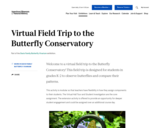
A perfect field trip for K-2! This virtual field trip from the American Museum of Natural History takes children through a 360 video as they observe butterflies and compare their patterns.
This field trip includes a teachers guide, student worksheets and extension activities.

Here is a list of 30 virtual field trips that students could enjoy, including:
San Diego Zoo - The San Diego Zoo has a website just for kids with amazing videos, activities, and games.
Yellowstone National Park - including Mud Volcano, Mammoth Hot Springs, and so much more
MARS!!! - Explore the surface of Mars on the Curiosity Rover. They are updating from WEBVR to WEBXR now, but 360 Mode offers a digital view!
Animal Cameras - Live Cams at the San Diego Zoo
Monterey Bay Aquarium live cams
Panda Cam at Zoo Atlanta
6 Animal Cams at Houston Zoo
Georgia Aquarium has Jellyfish, Beluga Whales, and more
Virtual Farm Tour - This Canadian site FarmFood 360 offers 11 Virtual Tours of farms from minks, pigs, and cows, to apples and eggs
U.S. Space and Rocket Museum in Huntsville, AL - See the Saturn 5 Rocket on YouTube and more on this tour thanks to a real father/son outing
Discovery Education Virtual Field Trips - A few of the field trip topics include:
Polar Bears and the Tundra
Social Emotional Skills
STEM
manufacturing
The Louvre - Travel to Paris, France to see amazing works of art at The Louvre with this virtual field trip
The Great Wall of China - This Virtual Tour of the Great Wall of China is beautiful and makes history come to life
Boston Children’s Museum - Walk through the Boston Children’s Museum thanks to Google Maps! This virtual tour allows kids to explore 3 floors of fun.
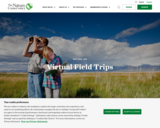
Designed for ages 9-15 but customizable for all ages, virtual field trips allow students to travel the world and explore natural environments without leaving the classroom. Each virtual field trip contains a video, teacher guide, and student activities.
Enjoy these virtual field trips and accompanying materials:
1. The Secret Life of Corals - Learn how fragile reefs are being damaged by human activity and climate change, and how scientists are developing ways to restore corals.
2. View from a Canoe - Can you imagine a place with 100 million acres of forest and 30,000 miles of coastline? It exists. The Emerald Edge is home to the largest intact coastal temperate rainforest.
3. The Coral Reefs of Palau - Join our expert scientist, marine biologist Stephanie Wear, on a virtual field trip to the coral reefs of Palau where you'll explore amazing underwater cities.
4. China's Great Forests - Join our expert scientist Yue Wang, a conservation planning officer for The Nature Conservancy, on a virtual field trip across the world to two stunning provinces in China.
5. Powering the Planet: Renewable Energy - Join scientist Alex Wegmann as we embark on a Virtual Field Trip to explore a compelling question: How can we get the energy we need without harming nature?
6. Journey of Water: Colombia’s Páramo - In this virtual field trip, we will explore the magical páramo ecosystem and the stunning mountain landscapes found just beyond the capital city of Bogotá.
7. Peru: A Coastal Ecosystem - Join fisheries scientist Matias Caillaux to explore the Humboldt Current Ecosystem off the coast of Peru while learning about the area’s amazing diversity and productivity.

The concept of water activity is important to food preservation. When water activity is less than 0.6, almost all microbes, including bacteria, molds, and yeasts, stop growing. Vegetables are usually dried even further, to water activity of 0.3 or 0.2, for quality and storage. Virtual Labs – Controlling Water Activity in Food explores a traditional method of preserving corn by drying. In this virtual laboratory, learners test water activity levels of dried corn and explore how they change under three different storage environments. The interactive animation guides users through the theory and practice of sampling a food product, using a water activity meter, and setting up replicates, to build familiarity with concepts and procedures used in real food science labs. Before beginning this lab, it may be useful to complete Virtual Labs – Understanding Water Activity.

Testing the pH of a substance (how acidic or basic it is) is a basic lab test and provides a important piece of information for natural science investigations. In food science, the pH of a substance – how acidic or basic it is – is key to how it functions in food recipes. This module introduces users to the pH scale and its uses in food science. Then, users learn how to use the pH meter, and calibrate it by measuring solutions of standard value. Virtual Labs – the pH Scale & Meter Calibration familiarizes the user with food science lab equipment and teaches standard techniques for this specific procedure. The interactive animation guides the user through theory and practice of using the pH scale and pH measurement, so they will have familiarity with the equipment and procedures when encountered in a real lab.

Moist foods – like fresh fruit or raw meat – often have high water activity and spoil quickly. But some foods that seem moist – like jam or pepperoni – don’t spoil as quickly. Why is this? All living things need water to survive. Enzymes and chemical reactions also require water. If water activity is less than 0.6, almost all microbes, including bacteria, molds, and yeasts, stop growing. This means that food can be preserved against spoilage by lowering its water activity – whether by evaporating water away or binding it up. Virtual Labs – Understanding Water Activity familiarizes the user with food science lab equipment and standard techniques for measuring water activity. The interactive animation guides the user through both theory and practice, preparing them for experiences in a real lab. Complete this lab first, then follow up with Virtual Labs – Controlling Water Activity.
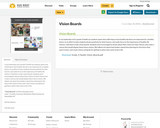
In my leadership unit in grade 9 health my students spent time reflecting on how
healthy decisions are important for a healthy future. In an effort to have students
dream positively for their futures, and really focus on the importance of healthy life
choices, I had them create vision boards. Students were encouraged to dream about
their visions for their futures and create a canvas that would display these future
visions. We talked a lot about how leaders spend time planning for the future they
want to have, and create visions and goals for getting to where they want to be in
life.
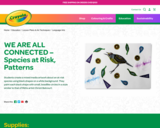
Students create a mixed media artwork about an at-risk species using black shapes on a white background. They paint each black shape with small, beadlike circles in a style similar to that of Métis artist Christi Belcourt.

Students learn about the mechanics of a lunar eclipse.
Students will use the Danjon Scale of Lunar Eclipse Brightness to assign an “L” value at three points during an eclipse. After the eclipse, students compare and justify their evaluations of the eclipse.

So, what happens when there's not enough water? Well... not good things. Do we let homes have more water for showering and cooking? Or do we let farms have the water for growing crops? There aren't any easy solutions, but in this video Sabrina chats with us about how water scarcity can cause problems.
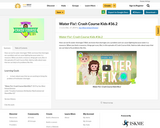
How can we fix water shortages? Well, we know that shortages are a problem and can cause fighting because water is a resource. When you limit a resource, things get scary. But, in this episode of Crash Course Kids, Sabrina talks about ways that we can help to fix problems like this.

Hank teaches us why water is one of the most fascinating and important substances in the universe.

The Sacred Relationship brings Aboriginal worldview right into your classroom and community. Download easy-to-teach lesson plans based on series of fifteen educational videos. The videos feature perspectives on water from Aboriginal Elders, leaders and Western Scientists.
Contact us and get access to the curriculum
Teachers across Canada can log in free of charge and get access to:
Grade 5 Science – Wetland Eco-Systems
Eleven Lesson Plans
Six Online Videos
Grade 5 Social Studies – Histories and Stories of Ways of Life in Canada
Four Lesson Plans
Four Online Videos
Grade 6 Science – Evidence and Investigation
Three Lesson Plans
Three Online Videos
Grade 6 Social Studies – Citizens Participating in Decision Making
One Lesson Plan
One Online Video
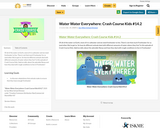
Of all of the water on Earth, most of it is saltwater and we need freshwater to live. There's not that much Freshwater for us (and other life) to get to. So how do different animals deal with different amounts of water where they live? In this episode of Crash Course Kids, Sabrina talks about the adorable Nerpa and how they deal with rough conditions to live in Freshwater!
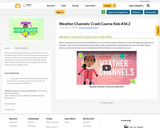
Why is my weather app sometimes wrong? Well it has a lot to do with wind. Jet Streams, air cells, the shape and movement of the Earth... there are a lot of things that make weather a little unpredictable. In this episode of Crash Course Kids, Sabrina talks to us about how Ocean Currents actually work with Jet Streams to move weather around.
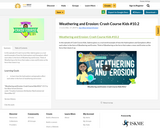
In this episode of Crash Course Kids, Sabrina gives us a real world example of how the Hydrosphere and Geosphere affect each other in the form of Weathering and Erosion. Think of Weathering as the force that makes a mess and Erosion as the force that cleans it up.
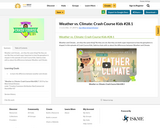
Weather and Climate... are they the same thing? No they are not. But they are both super important to how the geosphere is shaped. In this episode of Crash Course Kids, Sabrina chats with us about the differences between Weather and Climate.

This lesson from NASA explains how the Earth's tilt causes the seasons. There are also links to related resources on the webpage.
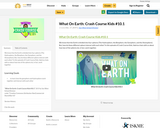
We know that the Earth is divided into four spheres (The Hydrosphere, the Biosphere, the Geosphere, and the Atmosphere). But, how do these different sphere interact with each other? In this episode of Crash Course Kids, Sabrina chats with us about how two of the spheres do, in fact, work together.